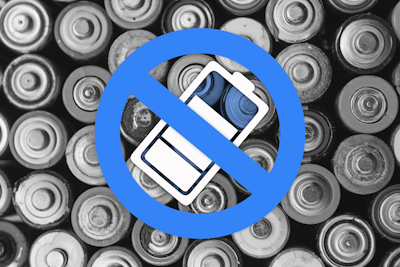Think Your New Lithium Battery is Dead? Not so Fast.

Ever had a non-rechargeable lithium battery quit on you from the start? What you likely experienced was an extended state of passivation.
Cell passivation is an important characteristic of lithium batteries that can be very difficult to understand for anyone (and everyone). So how does this "passivation" happen?
Passivation is a very thin, highly resistant, self-assembled layer formed on the surface of the lithium anode. Without the passivation layer, this type of lithium battery would not exist because the lithium would discharge and degrade quite rapidly. It's an intentional wall designed to keep the battery from losing its charge while awaiting use, giving it an extremely long shelf life.
The most obvious effect of the passivation layer is a temporary drop in voltage, or, voltage delay. Voltage delay will occur when a load is placed on the cell as illustrated in the following drawing:
After a load is applied to a cell, the high resistance of the passivation layer causes the voltage of the cell to drop rapidly. The discharge reaction slowly removes the passivation layer thereby lowering the internal resistance of the cell. This in turn causes the voltage of the cell to reach a peak value which should remain steady if other discharge conditions do not change. If the load increases after the cell's voltage stabilizes, then it may drop again until the passivation layer is fully removed.
Once the load is removed or lowered, the passivation layer will reform, and voltage delay may be a factor when subsequent loads are applied.
If a Supercell has been stored for a long time it will generate a passivation layer. The positive side of this is that it protects the battery from self-discharging. This gives the battery a long shelf life. The negative side is that this layer will cause a drop in voltage when a load is first applied. The passivation layer will, however, slowly disappear after the load has been applied to the battery for some period of time. Once the layer is gone, the output voltage should go back to the nominal level. If a cell has a thick passivation layer, the initial voltage could be fairly low (<3 Volt). The thicker the layer, the lower the voltage and the longer it will take for it to disappear. Our supplier for the Supercell does not give an exact time for how long it will take to remove the passivation layer. Their app notes states, “The duration will depend on the severity of the passivation.”
I have seen times when the battery voltage is so low due to passivation that the transmitter will turn off because it drops below our low voltage threshold. If you rotate the transmitter, it should wake back up and try again. You might have to do this multiple times before the passivation layer disappears and the voltage becomes stable.